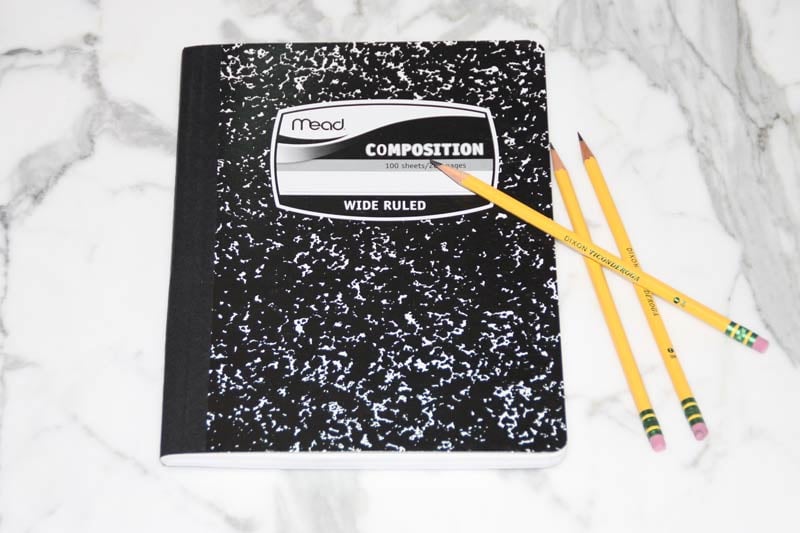 If you ask students what it takes to get good grades, many would probably say “being smart” and “studying hard.” But after years of working with students of all ages, it is clear that the key to scholastic success really comes from developing a plan and working hard to stick to that plan. We often support this planning and persistence with executive function coaching in order to help our students develop strong organizational systems and systematic processes. Here is some simple advice for students to help start the school year off right.
If you ask students what it takes to get good grades, many would probably say “being smart” and “studying hard.” But after years of working with students of all ages, it is clear that the key to scholastic success really comes from developing a plan and working hard to stick to that plan. We often support this planning and persistence with executive function coaching in order to help our students develop strong organizational systems and systematic processes. Here is some simple advice for students to help start the school year off right.
Take Stock of Your Strengths and Areas for Growth
To start, it is important to take stock of your strengths and relative weaknesses as a learner. What do you already do well and where can you improve? What types of organizational systems do you already have in place? What were your pain points last school year? Be introspective. No one is perfect. We all have strengths and relative weaknesses, and identifying them early in the school year can be extremely helpful.
Take Responsibility for Yourself
Part of identifying room for improvement and then setting goals and developing organizational systems means taking responsibility for yourself, your decisions and your actions. While this means different things for students of different ages, it’s important to understand that while other people can support or distract you from this responsibility, it is essential to focus on how to improve yourself rather than only looking at others’ actions. Obstacles present opportunities, and you can’t let your plan be thwarted because you don’t like a particular teacher, or you find a particular text boring, or you can’t seem to ignore certain peer influences. You have to take control and acknowledge that you are making conscious choices.
Focusing on your own actions means, as the old saying goes, “honesty is the best policy.” This means both being honest with others and yourself about, for example, how much work you have and what your other responsibilities are. Be realistic when planning how much time to set for each assignment. Misleading yourself or others about how much homework you have will only create more stress in the long-run. You don’t want to be in a position where you are handing in late or incomplete work. Meeting deadlines is an important lifelong skill that takes practice. It’s almost always a bad idea to penalize yourself unnecessarily with reduced grades because of late work. To mitigate this sort of situation, it’s critical to have strong organizational systems in place.
Commit To Organizational Systems That Work For You
But how do you stay on top of everything? Commit to organizational systems that work for you. Whether you prefer a paper planner, keeping track of your assignments online, or a hybrid system, choose the method that works for you and stick with it. Make sure you update your planner every day and actually check it. While digital planning and calendaring works for many students, sometimes “old school,” more concrete methods are better, such as a wipe-off wall calendar using markers and/or post-it notes.
In order to avoid academic burnout, be sure to make time to do the things you love during the school year, whether it’s sports, music, video games, or just hanging out with friends. But also make sure that you aren’t using your favorite activities to procrastinate your school work too much. Moderation is key. On busy school nights, set timers for how long you are going to spend on breaks. Successful organizational systems include time for self care and recharging, though not every week may be equally well balanced.
Most importantly, remember that learning is a process, not simply checking things off of a list. This is particularly important on writing-based tasks where you should not be satisfied until you have edited, edited, and done more editing (and sought feedback from others!). In math, keep trying different ways to solve a problem until you have figured it out. The process in both subjects — or any subject — is more important than just getting the answer or completing the task.
And if you need help, don’t be afraid to ask! Organizational systems need continuous refinement at all stages of life as we incrementally take on more responsibility. Executive function coaching, content support, and test preparation can take on many shapes and sizes in order to best fit the situation. Ask your teachers, parents and/or academic coaches for help when you need it and take advantage of help when it’s offered.
For more information about academic tutoring, executive function coaching, and school planning, please contact Brad Hoffman and Faya Hoffman at My Learning Springboard.
By Brad Hoffman, Board Certified Educational Planner and Learning Specialist, and Laurie Gross, Educational Consultant and Reading Specialist.
 Among the genres of writing projects that students experience in upper elementary, middle and high school, the five-paragraph essay is one of the most popular. Well, it’s popular with teachers. With students, just saying the phrase “five-paragraph essay” can evoke audible groans. For those writers, it calls to mind themes of dullness and standardization, a static formula. Yet the form is a valid one for a number of reasons, and in the right conditions, it can encourage creative thinking instead of stifling it. In fact, among the benefits of the five-paragraph essay are valuable opportunities for writers in terms of cognition, rhetoric, and culture.
Among the genres of writing projects that students experience in upper elementary, middle and high school, the five-paragraph essay is one of the most popular. Well, it’s popular with teachers. With students, just saying the phrase “five-paragraph essay” can evoke audible groans. For those writers, it calls to mind themes of dullness and standardization, a static formula. Yet the form is a valid one for a number of reasons, and in the right conditions, it can encourage creative thinking instead of stifling it. In fact, among the benefits of the five-paragraph essay are valuable opportunities for writers in terms of cognition, rhetoric, and culture. Summer and Fall School Planning
Summer and Fall School Planning How often have you heard these statements?
How often have you heard these statements? The college admissions process is full of milestones: The first day of new student orientation, the first text exchanges with new roommates, the first acceptance letter. These moments are significant for students, and for their families as well. They form important early impressions of an institution you are considering becoming a part of for four years, and often a lifetime. Chief among these milestones are the
The college admissions process is full of milestones: The first day of new student orientation, the first text exchanges with new roommates, the first acceptance letter. These moments are significant for students, and for their families as well. They form important early impressions of an institution you are considering becoming a part of for four years, and often a lifetime. Chief among these milestones are the